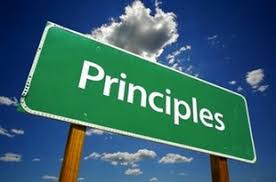How do we create sustained results as sales professionals? After all, our jobs are:
- Create differentiated value with our customers.
- Execute our company business strategies with our customers.
- Achieve/exceed our goals and objectives.
There are thousands of “experts” providing advice to sales people on how to best do our jobs. Thousands of posts and books, give the latest insights, techniques, principles to “help” sales people.
The web is loaded with titles like:
- “20 [choose the number you want] tips/techniques to get the customer to……”
- “Just do this one thing for guaranteed sales success…..”
- “Here’s the quota busting playbook for success in…..”
- “Get prospects to return [insert your calls, emails, outreach] for success….”
- “Just say these words ……. for guaranteed success.”
- “Using this tool/technique will increase your results by [insert whatever preposterous multiplier you want]….”
- ….and the claims go on and on.
It seems with just the right techniques or tactics, plus some wishful thinking we can always find a certain path to achieving our goals. And if the one’s we have chosen don’t work, there are thousands more to try out.
There’s no end to advice on tactics and techniques, and I suppose they have all worked—perhaps at least one time in one situations. But those presenting them seem to have discovered the secret to sustained sales success.
The problem with techniques and tactics is they are situational and only address a single issue–perhaps the issue we are confronted with right now. Stated differently, they only help us in a very specific situation or under certain circumstances. But as the situations or circumstances change, the tactics and techniques fail us.
Additionally, techniques and tactics don’t help us with the whole customer engagement process. We end up having to search for techniques and tasks for prospecting, different ones for qualification, discovery, objection handling, managing deals, making sales calls, presenting solutions, creating value, closing, and on and on…….
Those who rely on techniques and tactics, must continually search for just the right one, for this situation, thie customer, these types of products, and this part of the buying cycle.
Alternatively, we keep applying the same tactics and techniques with decreasing success to every situation, with declining results until we are forced to look for new tactics and techniques.
Overlaying all of this are constant changes in our customers, markets, products, and the things critical to success in engaging customers.
How do we break out of this conundrum? How do we start to understand how to be more successful, time after time, customer after customer, situation after situation, month after month?
It’s to focus on the basic principles underlying customer buying processes and how we successfully engage them in moving through their buying process. The problem is principles are boring—there’s nothing new, exciting, or sexy about principles. There is no “latest, greatest, technology enabled” secret to basic principles.
They are the same things that have served as the foundation to sales success for decades.
Perhaps the problem with principles is they don’t give us the answers, rather they provide us a framework from which we can develop the answers that are most relevant to the specific situation we face.
For example, we know the principles that we have to be customer focused, put the customer at the center of our engagement strategies, and create value in every interchange. Those principles have been around for at least decades, if not centuries.
But we are confronted with, “What does that mean for this situation or what I need to do now?”
In applying principles we have to think about the situation, we have to assess what might be best, based on our past experience in applying the principles in similar situations. We have to adapt those approaches, based on what we’ve learned and what we believe works best now.
In complex B2B buying and selling, there is no one right way, there is no single answer. There are, inevitably, choices we make that may or may not work for a situation, and changes/adaptations we must leverage as we engage customers.
Buying and selling in complex B2B situations requires critical thinking, problem solving, and the ability to figure things out–which is why, inevitably, tactic and techniques consistently fail.
Stop the wishful thinking! Stop looking for someone else to give you the answers! Make sure you understand the underlying principles to buying/selling success, take the time to figure out (with your customer) what’s the best path forward to achieving your shared goals.

Leave a Reply